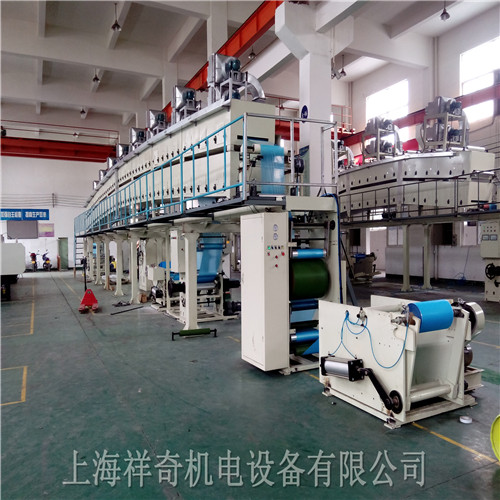Nowadays, most of the hard coatings use acrylic monomers and acrylic oligomers with higher functional groups, which are applied to the film surface by roll coating method. The curing method is generally UV curing. The industry thinks that only UV curing is available. In fact, the curing of hard coatings can also be achieved by thermal curing.
UV curing
Ultraviolet radiation is used to initiate free radicals and stimulate covalent bonds of organic molecules to produce chemical reactions, resulting in cross-linking and polymerization. This method has lower curing energy but less environmental impact, so it is more practical.
The problem of UV curing is the inhibition of oxygen. In fact, the radiation curing reaction of all radiation curing materials is affected by oxygen in the air. Because the concentration of oxygen in the surface layer is the highest, the inhibition of oxygen will cause the lower layer to solidify and the surface to become sticky. The results show that the energy consumption of 1 μ m thick coating cured in air is 20 times more than that of 1 μ m thick coating cured in air. The inhibition of oxygen not only prolongs the radiation curing time, but also damages the important properties (hardness, wear resistance and scratch resistance) of the cured surface.
Inert gas protection is the best way to prevent oxygen polymerization. At present, most domestic equipment does not have such devices, usually consider increasing the concentration of initiator, increasing the radiation energy, first UVB, then UVA, using the combination of initiators (184 and 819 combination, 1173 and TPO combination) to promote surface dry and deep initiation.
Heat curing
The free radical is initiated by heating and the covalent bond is stimulated to produce chemical reaction, resulting in cross-linking and polymerization. Thermosetting is a method which is easy to be ignored in the production stage of protective film.
The problems of heat curing process are: high energy requirements, poor environmental applicability and long drying channel requirements; long line used in the production stage is unfavorable for tension control and coating accuracy control; considering the high requirements of heat curing temperature, the polyester film widely used at present is very sensitive to temperature, and can not be stored above 120 ℃ for a long time, but heat curing needs to be carried out When the temperature is higher than 135 ℃, the cooling of the film is considered in the curing process. The curing time window is very small, and the response time should be carefully allocated in the efficiency, leveling and drying stages. The influence of the thermal effect on the surface hardness should be considered in the heat curing process. Too high temperature will make the monomer or resin volatilize, which will affect the film quality. The initiator used in the heat curing process will evaporate after evaporation Crystallization on the inner surface of the drying channel will cause secondary pollution to the product.
Thermosetting has the advantages of no primer coating and curing; if UV curing, the primer is absolutely indispensable; the potential advantage of thermosetting is that when the formula is appropriate, it can greatly reduce the edge interference (Rainbow) of the coating, and the mechanism is that under the thermal condition, the crystallization order of the coating material changes, resulting in the change of refractive index which is conducive to reducing the edge interference.
The potential advantage of heat curing is that most of the coating and wiring which produce silicone protective film in China can directly produce hardened layer without modification.
Stretch coating and curing
The manufacturing process is direct on-line coating in the process of PET film biaxial drawing, and the hardening layer is directly produced by drawing and heat setting. At present, only a few manufacturers have mastered this process, and the materials used are still under exploration.

